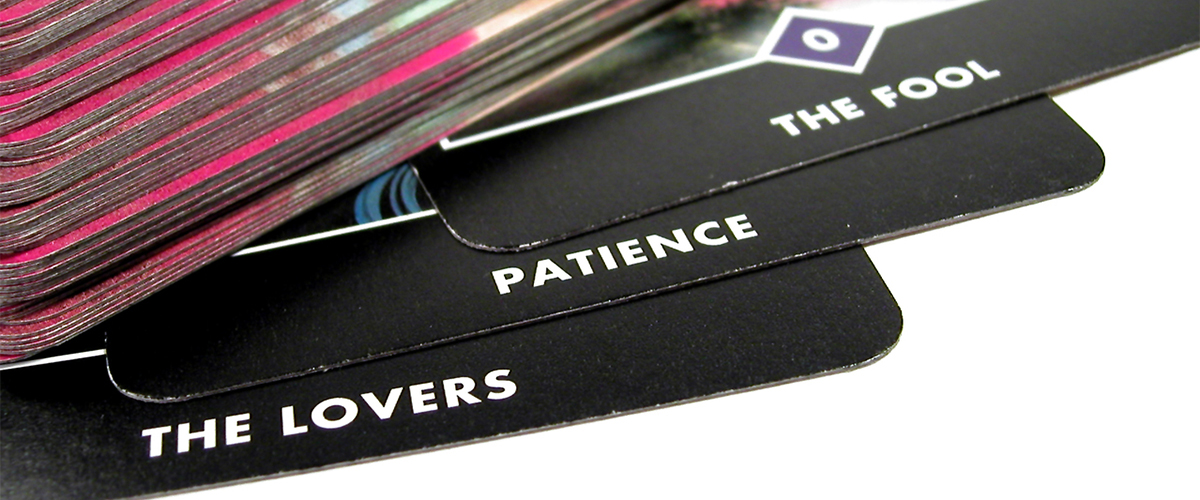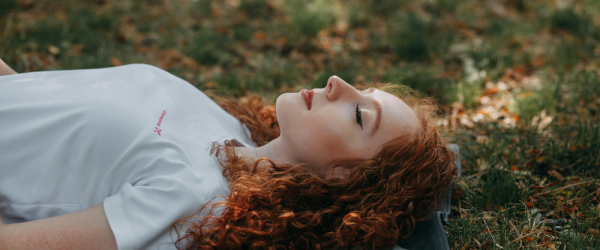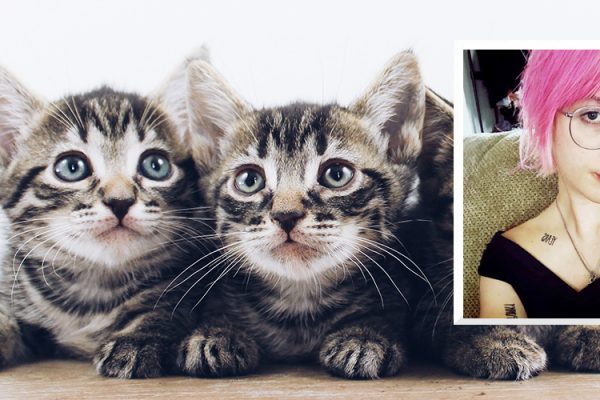A lot of people think of tarot cards in one of two ways. They are either:
1. Elusive fortune-telling devices that can make or break your day (also, kinda spooky).
2. Stupid cards with a superiority complex.
While I can’t convince people who think tarot is stupid it’s not, I can confidently try to persuade you all that the cards are certainly not spooky.
What are tarot cards?
The tarot is a deck of 78 cards. There are 22 Major Arcana cards, which are said to represent life’s karmic and spiritual lessons. There are also 56 Minor Arcana cards, which reflect the trials “we” face on a daily basis, says Brigit, owner of the Biddy Tarot.
Tarot 101
Each tarot deck—and there are thousands of decks to choose from—has a particular style and vibe and typically comes with a helpful instruction booklet. Although some tarot readers say a person should never buy their own deck (tarot lore says a deck should be gifted), I tend to follow Lindsey Mack’s line of tarot advice: Chill, you can buy your own.
I’ve bought three decks over the years and like each of them for different reasons. The Universal Waite deck was my first deck. I bought it because it was inexpensive and easy to read. My second deck, The Zombie Tarot, spoke to my horror-loving, Halloween-celebrating side. I bought my most recent deck—The Animal Totem Tarot—because of my attraction to animal imagery and love of the Earth.
Reading tarot
I regularly listen to Mack’s super accessible tarot podcast, Tarot for the Wild Soul. Every other week, Mack explains a section of the tarot, such as Pentacles, or a specific card, such as Temperance. She also publishes multiple interviews she does with tarot deck creators and readers.
Mack’s basic “take it easy” tarot philosophy helped me enter the tarot world with ease. In general, Mack advises her listeners to have fun with the cards. No single card is meant to cause fear. In fact, some of the more traditionally “scary” cards, such as Death or the Tower, shouldn’t be feared at all.
These “scary” cards—similar to all the tarot cards—represent general constructs. For example, Death doesn’t mean you or someone you love is going to die. The card’s presence may just mean the “death” of something in your life — such as a bad habit — that no longer serves you.
“Every spiritual lesson we meet in our lives can be found in the seventy-eight tarot cards,” Brigit has explained. “And when we consult the tarot, we’ll get shown the exact lessons we need to learn and master to live an inspired life. It’s like holding up a mirror to yourself so that you can access your subconscious mind and tap into the wisdom (and answers) that lives in us all.”
Pulling a card a day
Although each tarot deck comes with a handful of card spreads you can easily pull, I started my practice by pulling a card a day. This simple act serves as a morning meditation, and it’s a perfect way to get to know new decks.
I started pulling a card a day a few months ago when I was looking for a morning ritual to help me remember to meditate. Thankfully, remembering to pull a card and reflecting on that card’s meaning is incredibly easy and helps me think about the things in my life I want to change, etc.
Start your own practice
First, you don’t have to place any spiritual significance on tarot cards. You can simply like the way a deck looks and enjoy the little nuggets of advice the deck “gives” you about yourself.
Second, pick your deck with intent. Some of the older decks are a bit… problematic. And by problematic, I mean heteronormative and lacking POC representation. Thankfully, there are plenty recently made decks out there that have expanded the tarot card universe. (The Hoodwitch has a page dedicated to various interesting decks.)
And finally, just jump in. Don’t think too much about it, and try to have fun. And hopefully, with a bit of practice, you too can start a daily ritual that helps you become a better version of your already awesome self.
—
Abbie Stutzer is a writer and editor from Lawrence, Kansas. Find her on Twitter at @abbiestutzer and on Insta at @abbiestutzer. Email her at abbie@ynotcam.com.
Editor’s note: When we were searching for interesting images to accompany this piece, this popped up under #tarot — and, well, it’s kinda true.
Image via Paige Foster.










